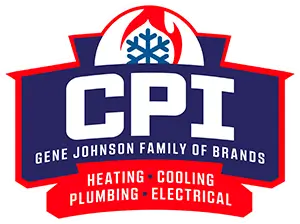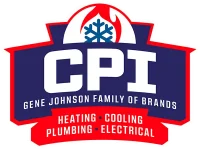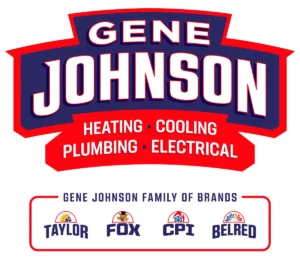Early Warning Signs of a Failing Water Line in Seattle-Area Homes
Most of us don’t think twice about the pipes running under our lawns or through our walls until something goes wrong. Your water line is one of those unseen essentials, quietly delivering clean water to your home every single day. But when it starts to fail, the symptoms can range from mildly inconvenient to seriously damaging.
In the Seattle area, where our wet weather and older homes add extra stress to underground piping, it’s especially important to spot problems early. At CPI Plumbing, Heating, Cooling & Electrical, we’ve seen how a small water line issue can quickly escalate if ignored.
A Sudden Drop in Water Pressure
If your once-powerful shower suddenly feels more like a drizzle, that’s one of the first hints your water line could be in trouble. Low water pressure can have a few causes, like a clogged faucet aerator or a partially closed shut-off valve, but if it’s affecting multiple fixtures throughout your home, it’s time to look deeper.
A leaking or cracked pipe underground allows water to escape before it ever reaches your faucets. Even a small fissure can reduce pressure noticeably. In some cases, minerals and debris from the soil can enter the line through that crack, further clogging the system.
If you’ve ruled out simple fixes and the issue persists, professional inspection is your best next step. At CPI, we use specialized equipment to pinpoint leaks and pressure issues without unnecessary digging, saving time and protecting your yard.
Discolored or Cloudy Water
Clear water is what we expect from our taps, so any change in color or clarity deserves attention. Rusty, yellow, or brown-tinted water could indicate corrosion inside your pipes, especially if you live in an older Seattle-area home with aging galvanized steel lines.
If the discoloration is constant, it’s often a sign of deterioration in your main water line. However, if it appears only when using hot water, the problem might lie within your water heater. Cloudy or milky water, on the other hand, could mean air has entered the system due to a leak or pressure imbalance.
Common causes of discolored water include:
- Corrosion or rusting inside aging metal pipes
- Sediment buildup in the water line or heater
- Cracks allowing soil or debris into the line
In any case, don’t ignore changes in water quality. It’s one of the earliest red flags that your piping needs attention, and sometimes, that attention involves water line repair or replacement.
Unexplained Wet Spots or Puddles in the Yard
Seattle’s soil stays moist most of the year, but if you notice isolated soggy patches, pooling water, or unusually green grass in one spot, that could point to a leaking underground water line.
When a water line develops a crack, even a small one, it slowly releases water into the surrounding soil. Over time, this can lead to sinkholes, shifting ground, and even foundation problems if it’s close to the home.
What to look for outside your home:
- Soft, muddy ground when the weather has been dry
- A sudden increase in your water bill
- Hissing or bubbling sounds from underground when standing near the affected area
CPI’s licensed plumbers can use advanced leak detection tools to locate and confirm a leak before any digging begins. That way, you can get the right repair, whether that means a localized fix or a full water line replacement without tearing up your entire yard.
Higher Water Bills Without Explanation
Nobody likes surprises on their utility bill, especially when you can’t find the cause. A gradual or sudden spike in your water costs often indicates a hidden leak somewhere in your system.
Leaks in the main water line can waste thousands of gallons a month without producing obvious symptoms inside the home. Even if your faucets and fixtures seem fine, your water meter may tell a different story.
Try this quick test:
- Turn off all water-using appliances and fixtures inside and outside your home.
- Check your water meter and note the reading.
- Wait at least 30 minutes (or longer, if possible).
- If the meter reading has changed, water is escaping somewhere, most likely through a leak.
If this test confirms water loss, don’t delay. Contacting a professional for leak detection and repair now can prevent serious structural or landscaping damage later.
Discolored or Damp Basement Walls
Not every water line leak happens outside. In many Seattle-area homes, water lines run under the basement floor or along the foundation walls. When these pipes begin to fail, the first signs often appear indoors.
You might notice damp spots, peeling paint, or an earthy smell in your basement or crawl space. Over time, continuous moisture can lead to mold growth and wood rot. In the Pacific Northwest, where humidity is already a challenge, ignoring these signs can quickly lead to indoor air quality problems.
Professional plumbers can inspect exposed piping and perform moisture mapping to find hidden leaks behind walls or under concrete. In some cases, trenchless pipe lining is a great solution, reinforcing damaged pipes from the inside without the need for full excavation.
Strange Noises from the Plumbing
If you hear banging, gurgling, or hissing sounds when your plumbing isn’t in use, don’t shrug it off. Noisy pipes can be an early indicator of pressure fluctuations or leaks in your water line.
When a pipe develops a crack or partial blockage, air can get trapped inside the line, causing gurgling sounds. A faint hissing may mean water is escaping under pressure somewhere in the system.
Noises to pay attention to:
- Gurgling from drains or toilets when no water is running
- Banging pipes (sometimes called “water hammer”)
- Whistling or hissing sounds near fixtures or walls
It’s always better to have a professional investigate before these small issues evolve into major plumbing failures. Identifying the source of the sound can help determine whether you need a simple repair or a more extensive repiping project.
The Age of Your Piping System
Sometimes, even without any visible signs, the age of your plumbing can be reason enough to schedule an inspection. Many older homes in the Seattle area still have galvanized steel or polybutylene pipes, materials known to corrode or deteriorate over time.
If your water line is 40 years old or older, it’s likely nearing the end of its lifespan. While routine maintenance helps, older pipes become more prone to leaks, breaks, and low pressure. Replacing them proactively can save you from future water damage or emergency repairs.
Modern materials like copper and PEX offer far greater durability and resistance to corrosion. Depending on your situation, CPI may recommend partial repiping or full water line replacement using high-quality materials that meet current Washington plumbing codes.
For Top-Tier Water Line Services in Skagit County, Call CPI!
A failing water line can be stressful, but the good news is that early detection makes all the difference. Whether you’ve noticed damp spots, higher bills, or changes in water pressure, CPI Plumbing, Heating, Cooling & Electrical is here to help. Our licensed plumbers specialize in accurate leak detection, professional water line repair, and complete water line replacement when needed.
Serving Mt. Vernon and communities throughout Skagit County and the greater Seattle area, our team takes pride in providing honest advice and lasting solutions. We follow all Washington plumbing codes and use proven repair methods that keep your home safe and dry. If you suspect something’s wrong with your water line, give CPI a call today and let our experts handle it before it becomes a costly headache.


